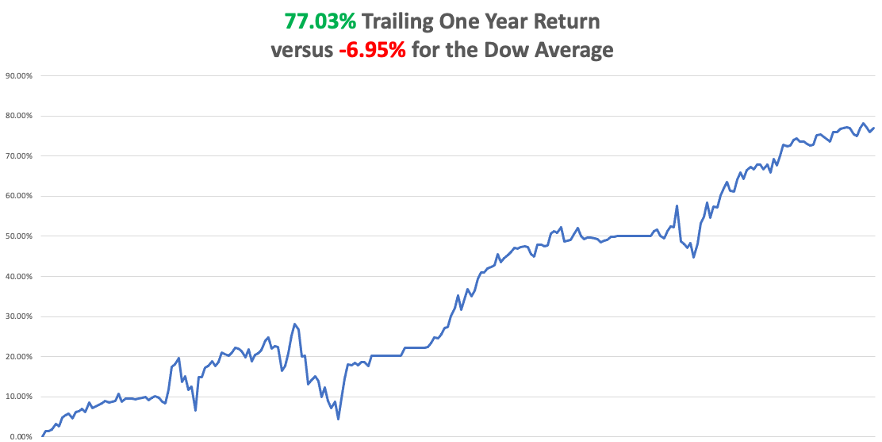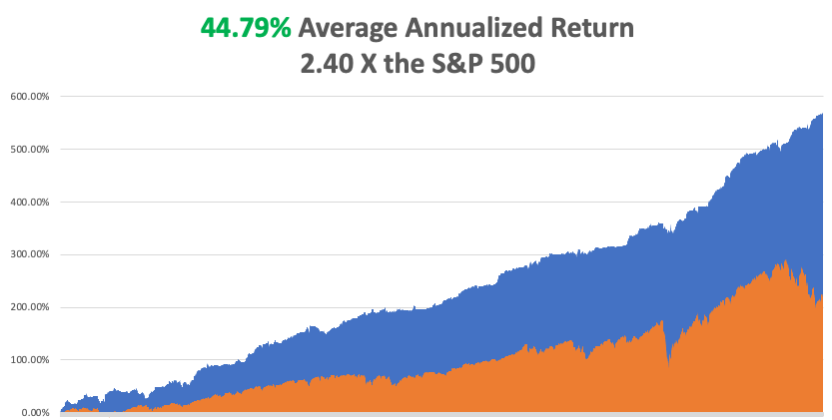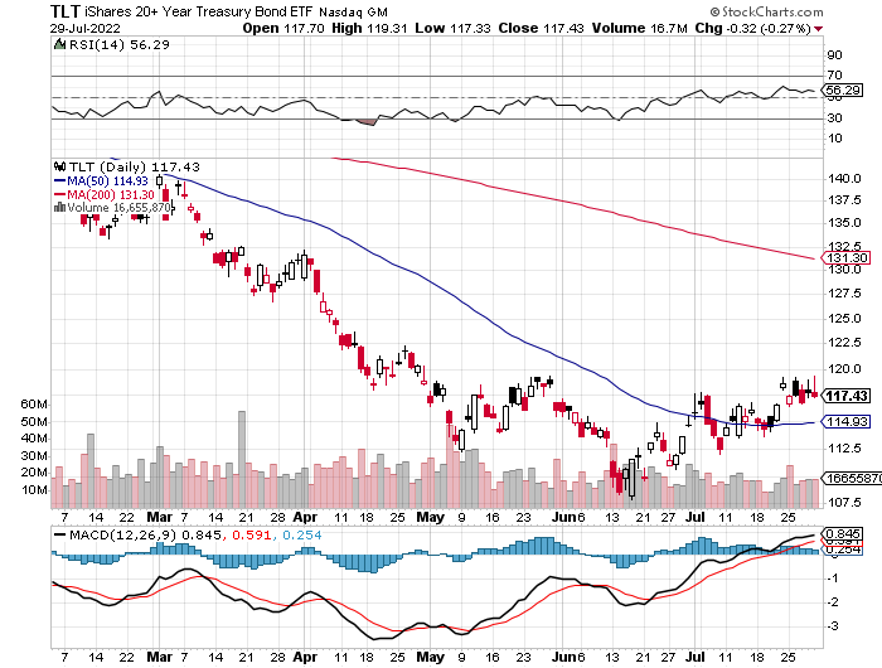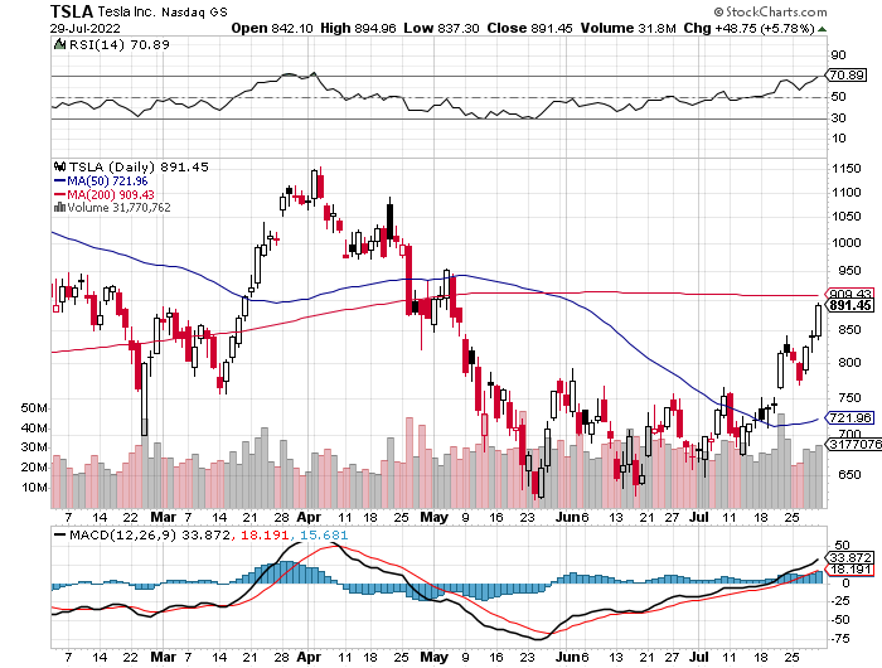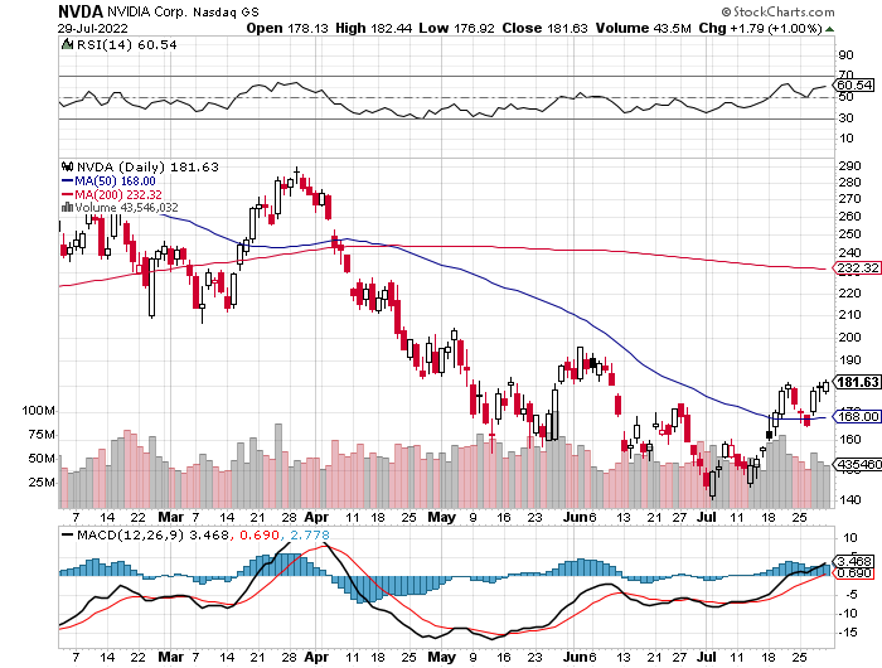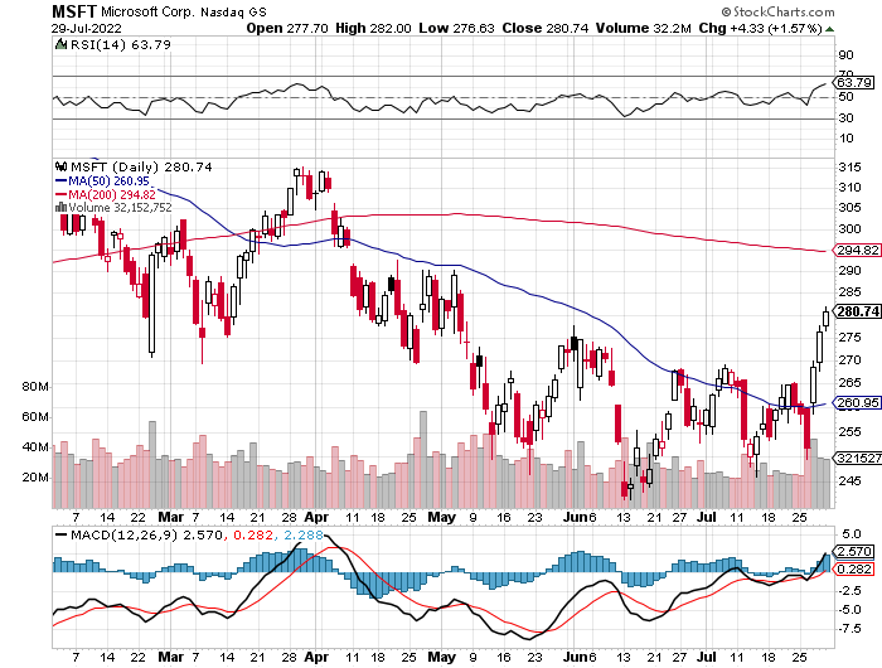I am writing this from the balcony of my corner suite at the historic Danieli Hotel overlooking the Grand Canal in Venice, Italy.
Every conceivable watercraft imaginable are passing by in large numbers; water taxis, Vaporettos, and even the traditional gondolas. Outside my window, I see two pilots are heatedly arguing over who should enter the side canal first.
This will be my last stay at the Danieli for a while as the 200-year-old hotel cobbled together for three 700-year-old palaces has been sold to the Four Seasons and will imminently close for a three-year gutting and remodeling.
Until Thursday, the market was reaching the top of a three-month range and was ripe to roll over for an August summer correction. Then the Democrats dropped a bombshell. They announced a blockbuster $739 billion stimulus package that will be voted on as early as this week. All of a sudden, the Biden agenda is back on just at one-third its original size.
The package breaks down as follows:
Commits $369 billion to Climate change
Renews a $7,500 tax credit for electric vehicles
Allows Medicare to negotiate prices
Adds a 15% Corporate alternative minimum tax
Reduces the Deficit by $300 billion
It all amounts to a massive stimulus package just as the US economy is entering the most modest of recessions. It also represents a Hail Mary for the Democrats to maintain congressional control.
It just might work.
Who is the biggest victim of the stimulus package? Big oil companies where an alternative minimum neatly sidesteps the oil depletion allowance which enabled them to dodge most taxes since it was passed in 1913.
Who is the biggest winner? Tesla (TSLA), which accounted for 80% of global EV production and benefits enormously from a $7,500 tax credit, is made available for low-income earners purchasing electric cars. It also allows tax credits for the purchase of used EVs for the first time. That is important for the economy as a whole, as both General Motors (GM) and Ford (F) plan to have more than 50% of their production in EVs by 2030.
Traders seemed to know this, taking Tesla shares up 50% from the June bottom and minting several new Mad Hedge millionaires along the way.
The market seemed to sense that something was in the works, even though the meetings were held in secret in a windowless basement room in the Capitol Building. The markets seemed to know something was coming. July posted the best market performance in two years, with the Dow Average up 7.69%.
This is a classic example of markets sensing major events we mere humans are blind to. My favorite example of this is the Battle of Midway, where the Japanese lost a disastrous four aircraft carriers and 350 planes, which ended on June 7, 1942. Even though the outcome was top secret and withheld from the public for months, a 20-year bull market ensued and didn’t end until the 1962 Cuban Missile Crisis.
You may have noticed that I have pulled back from my aggressive shorting of the bond market. That’s because the US budget deficit is seeing the largest decline in American history. Throw in the $300 billion promised by this week’s stimulus package, and the deficit will plunge by a staggering $1.5 trillion in 2022.
That will pay off 37.5% of the $4 trillion deficit run up by the Trump administration. As a result, ten-year US Treasury yields have plunged an eye-popping 90 basis points, from 3.5% to 2.6% in only six weeks. No wonder stocks have been so hot during the same time period.
The Fed Makes Its Move, and the market loved it, taking stocks up 436 points. Notice that the market is not letting anyone in. An increasing number of investors are coming over to my view that the S&P 500 is headed over to $4,800 by yearend. The bottom for this cycle is in. The overnight rate is now 2.25%-2.5%. The Fed is rapidly catching up with the curve. Powell left the door open to raising only 0.50% next time. The futures market is betting that we hit 3.3% this year.
The US is Officially in Recession, after reporting a slight 0.9% decline in Q2. That makes two back-to-back quarters following the 1.6% decline in Q1. The big question is are we already out, given the incredible demand seen in some sectors of the economy, like airlines, hotels, and resorts? It also looks like a big spending bill is about the pass congress.
Weekly Jobless Claims Hit 256,000, down 5,000 from the previous week. Is the recession already over?
IMF Cuts GDP Forecast, cutting its 2022 forecast from 3.6% to 3.2%. 2023 gets a haircut from 3.6% to 2.9%. The IMF is always a deep lagging indicator. Inflation, a China slowdown, and the Ukraine War are the reasons. I think largest are about to start discounting a growth resurgence.
Russia and Ukraine Sign Grain Deal, opening up the Black Sea ports for wheat exports. It’s hard to imagine how this is going to work. Two countries at war but continuing international trade? Indeed, one Russian missile hit Odessa the next day with two others shot down. Still, it was enough to drop wheat prices.
Space X Breaks Launch Record, sending 32 reusable Falcon 9’s aloft so far in 2022. The Starlink ramp-up is responsible, Elon Musk’s effort to build a global satellite WIFI network. You can already become a Starlink beta tester in the US at competitive prices.
The S&P Case Shiller National Home Price Index Sees Another Drop, from 20.6% to 19.7% in May. The closely watched figure saw only its second drop in three years. Tampa (36.1%), Miami (34%), and Dallas (30.8%) brought in the strongest gains. These are still incredible mains, meaning high mortgage interest rates have yet to make a serious dent in prices.
Pending Home Sales Fell a Staggering 20% in June, on a signed contracts basis, says the National Association of Realtors. It’s the slowest pace since June 2011. The roll-over of the real estate market has just begun, in volume, if not in price. The hottest cities like Phoenix, Tampa, and Boise are seeing the sharpest falls.
Lumber Prices are Still in Free-Fall, with lumber sales down 25% in June. Commodities are still falling, showing that the end of inflation is near. Some 10.8% of orders have been cancelled and inventories are building. Construction costs are falling too.
Russia Seizes all Foreign Leased Aircraft and re-registers them as Russian. Some 515 leased aircraft worth $10 billion are trapped in the country and are not allowed by sanctions to get spare parts. Ireland is taking the biggest hit, with 40% owned there. Why insurance covers accidents and not theft as large commercial aircraft are so rarely stolen. And 515 at once! This will be a legal headache for the ages.
Walmart Gets Crushed, with the founding Walton family taking $11.4 billion in personal losses on the $13 or 10% drop in the stock suffered yesterday. Low-end retail is not what you want to own if you think a recession is headed our way. That’s on an expected 13% decline in EPS expected for the year. Sam Walton would be rolling over in his grave.
Microsoft Misses Slightly, but the stock jumps 5% anyway as the long term buyers come in. A strong dollar punches foreign earnings in the nose. The crucial azure cloud hosting and storage business is still growing at 40% a year. Buy (MSFT) on dips and sell short the puts.
Meta (META) Post First Loss Ever in Q2, with ever weaker forecasts as Market Zuckerberg’s money machine grinds to a halt. It will take 3-5 years for the metaverse to mature to the point where the world’s largest social media platform is making money again. The required investment is overwhelming. Avoid (META).
The Wealthiest 100 Americans Lost $622 Billion Since November when the stock market topped. But they are still richer than pre-pandemic. Who was the biggest loser? My friend Elon Musk, whose stock dropped 50% from $1,200 in the first half, costing him a neat $170,000 billion personally. But it created a spectacular buying opportunity for the stock for the rest of us.
My Ten-Year View
When we come out the other side of pandemic and the recession, we will be perfectly poised to launch into my new American Golden Age, or the next Roaring Twenties. With oil peaking out soon, and technology hyper-accelerating, there will be no reason not to. The Dow Average will rise by 800% to 240,000 or more in the coming decade. The America coming out the other side will be far more efficient and profitable than the old. Dow 240,000 here we come!
With some of the greatest market volatility in market history, my July month-to-date performance exploded to +3.98%.
My 2022 year-to-date performance ballooned to 54.83%. The Dow Average is down -11.23% so far in 2022. It is the greatest outperformance on an index since Mad Hedge Fund Trader started 14 years ago. My trailing one-year return maintains a sky-high 77.02%.
That brings my 14-year total return to 567.39%, some 2.40 times the S&P 500 (SPX) over the same period and a new all-time high. My average annualized return has ratcheted up to 44.79%, easily the highest in the industry.
We need to keep an eye on the number of US Coronavirus cases at 91 million, up 300,000 in a week and deaths topping 1,030,000 and have only increased by 2,000 in the past week. You can find the data here.
On Monday, August 1 at 7:00 AM, the ISM Manufacturing PMI for July is released. Activision Blizzard (ATVI) announces earnings.
On Tuesday, August 2 at 7:00 AM, the JOLTS Job Openings for July are out. Caterpillar (CAT) and Airbnb (ABNB) announce earnings.
On Wednesday, August 3 at 7:00 AM, ISM Manufacturing PMI for July is published. MGM Resorts (MGM) announces earnings.
On Thursday, August 4 at 8:30 AM, Weekly Jobless Claims are announced. Amgen (AMGN) and Lyft (LYFT) announce earnings.
On Friday, August 5 at 8:30 AM, the Nonfarm Payroll Report for July is disclosed. Berkshire Hathaway (BRKB) announces earnings. At 2:00 the Baker Hughes Oil Rig Count is out.
As for me, I have met many interesting people over a half-century of interviews, but it is tough to beat Corporal Hiroshi Onoda of the Japanese Army, the last man to surrender in WWII.
I had heard of Onoda while working as a foreign correspondent in Tokyo. So, I convinced my boss at The Economist magazine in London that it was time to do a special report on the Philippines and interview president Ferdinand Marcos. That accomplished, I headed for Lubang island where Onoda was said to be hiding, taking a launch from the main island of Luzon.
I hiked to the top of the island in the blazing heat, consuming two full army canteens of water (plastic bottles hadn’t been invented yet). No luck. But I had a strange feeling that someone was watching me.
When the Philippines fell in 1945, Onoda’s commanding officer ordered the remaining men to fight on to the last man. Four stayed behind, continuing a 30-year war.
As a massive American military presence and growing international trade raised Philippine standards of living, the locals eventually were able to buy their own guns and kill off Onoda’s companions one by one. By 1972 he was alone, but he kept fighting.
The Japanese government knew about Onoda from the 1950s onward and made every effort to bring him back. They hired search crews, tracking dogs, and even helicopters with loudspeakers, but to no avail. Frustrated, they left a one-year supply of the main Tokyo newspaper and a stockpile of food and returned to Japan. This continued for 20 years.
Onoda read the papers with great interest, believing some parts but distrusting others. His world view became increasingly bizarre. He learned of the enormous exports of Japanese automobiles to the US, so he concluded that while still at war, the two countries were conducting trade.
But when he came to the classified ads, he found the salaries wildly out of touch with reality. Lowly secretaries were earning an incredible 50,000 yen a year, while a salesman could earn an obscene 200,000 yen.
Before the war, there was one Japanese yen to the US dollar. In the hyperinflation that followed, the yen fell to 800, and then only recovered to 360. Onoda took this as proof that all the newspapers were faked by the clueless Americans who had no idea of true Japanese salary levels.
So he kept fighting. By 1974, he had killed 17 Filipino civilians.
After I left Lubang island, a Japanese hippy named Norio Suzuki with long hair, beads, and sandals followed me, also looking for Onoda. Onoda tracked him as he had me but was so shocked by his appearance that he decided not to kill him. The hippy spent two days with Onoda explaining the modern world.
Then Suzuki finally asked the obvious question: what would it take to get Onoda to surrender? Onoda said it was very simple, a direct order from his commanding officer. Suzuki made a beeline straight for the Japanese embassy in Manila and the wheels started turning.
A nationwide search was conducted to find Onoda’s last commanding officer and a doddering 80-year-old was turned up working in an obscure bookstore. Then the government custom-tailored a prewar Imperial Japanese Army uniform and flew him down to the Philippines.
The man gave the order and Onoda handed over his samurai sword and rifle, or at least what was left of it. Rats had eaten most of the wooden parts. You can watch the surrender ceremony by clicking here on YouTube.
When Onoda returned to Japan, he was a sensation. He displayed prewar mannerisms and values like filial piety and emperor worship that had been long forgotten. Emperor Hirohito was still alive.
When I finally interviewed him, Onoda was sympathetic. I had by then been trained in Bushido at karate school and displayed the appropriate level of humility, deference, mannerisms, and reference.
I asked why he didn’t shoot me. He said that after fighting for 30 years, he only had a few shells left and wanted to save them for someone more important.
Onoda didn’t last long in the modern Japan, as he could no longer tolerate modern materialism and cold winters. He moved to Brazil to start a school to teach prewar values and survival skills where the weather was similar to that of the Philippines. Onoda died in 2014 at the age of 91. A diet of coconuts and rats had extended his life beyond that of most individuals.
Onoda wasn’t actually the last Japanese to surrender in WWII. I discovered an entire Japanese division in 1975 that had retreated from China into Laos and just blended in with the population. They were prized for their education and hard work and married well.
During the 1990s, a Japanese was discovered in Siberia. He was released locally at the end of the war, got a job, married a Russian woman, and forgot how to speak Japanese. But Onoda was the last to stop fighting.
The Onoda story reminds me of a fact about journalists very early in their careers. You can provide all the facts in the world to someone. But if they conflict with deeply held beliefs, they won’t buy them for a second. The debate over the 2020 election outcome is a perfect example. There is no cure for this disease.
Stay healthy,
John Thomas
CEO & Publisher
The Diary of a Mad Hedge Fund Trader
Hiro Onoda Surrenders
Budding Journalist John Thomas




